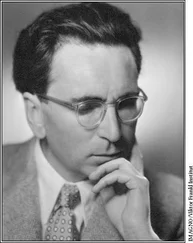Bacon could hardly believe it: At the very last moment, that miserable fiend had gotten away with it. And Bacon was not alone. The general feeling among the Allied forces was one of bitter disappointment, and several newspapers even dared publish the following headline: GOERING CHEATS HIS EXECUTIONERS.
“Where the hell did he get that pill?” Bacon asked Sadel.
“That’s what everyone wants to know,” Sadel responded. “They’ve already launched a full-blown investigation, though for the moment are not pointing the finger at anyone. Andrus is shattered,” he added, referring to the prison director. “A lot of people think it’s his fault, but you know, Goering wasn’t the first prisoner to commit suicide. I don’t think anyone could have prevented it.”
“But Goering! The day before his execution! It’s unbelievable.” Bacon shook his head, incredulous. “Could it have been that German doctor?”
“Pflücker? I doubt it,” said Sadel. “It would have been too difficult. The guards always searched him carefully before he entered each cell, and the pill he gave Goering was only a tranquilizer…. No, the Reichsmarschall must have had it hidden among his things, in the storage room, and someone must have brought it to him.”
“But who would want to help that pig?” Bacon asked, cracking his knuckles.
“Well, it’s not as simple as it may seem. I never had contact with him, but several people have said that Hermann was quite a character. During the trial proceedings not only Germans but Americans actually sympathized with him. He was just too cynical and biting to hate.”
A strange explanation, thought Bacon, especially coming from such a young man like Sadel, who was half Jewish and at age thirteen had been forced to flee Germany to find his father in the United States. Since then, he knew nothing of his mother’s whereabouts or whether she was alive or dead, for she had been forced to divorce his father and remain in Berlin. When he returned to Germany with General Watson, Sadel was given permission to search for her, and when he finally found her, she agreed to be one of the witnesses for the prosecution.
“Tex Wheelis is the prime suspect,” Sadel continued. “He was the officer in charge of the storage room. They say that he and Goering had become friendly, and that he might have been the one to help him. But we want to be able to find out for certain. The men in charge want to put this issue to bed. Their opinion is that it was an accident, and they feel the case should be treated as such.”
“An accident? ” Bacon was getting more and more heated. “Hundreds of people worked for months to have him hanged and at the last minute he managed to escape. Was Hitler’s suicide in Berlin another ‘accident’? And what about the Final Solution? Doesn’t that make you feel as if all of this has been useless? That we fought against an evil that got the best of us in the end?”
“The purpose of the trials was to uncover the truth, Lieutenant. To expose the truth about the Third Reich to the entire world, and to ensure that no one can ever justify the kind of atrocities that were committed. Who can deny the horror of the Nazi regime, the gas chambers and the millions of deaths, after seeing all those photographs?”
“But given the situation, do you think the truth will ever come out? The only truth we have is the one we are capable of believing.”
The following morning, Lieutenant Bacon watched from a distance as the dead bodies of the eleven Nazi chiefs—Joachim von Ribbentrop, foreign minister of the Third Reich; Hans Frank, governor-general of Occupied Poland; Wilhelm Frick, governor of Bohemia and Moravia; Alfred Jodl, chief of operation staff of the High Command of the Wehrmacht; Ernst Kaltenbrunner, head of the Reich Main Security Office and second-in-command to Himmler; Wilhelm Keitel, chief of staff of the Wehrmacht; Alfred Rosenberg, official philosopher of the regime and minister for the Eastern Occupied Territories; Fritz Sauckel, plenipotentiary for Labor Deployment; Arthur Seyss-Inquart, Reich commissioner of the Netherlands; Julius Streicher, editor and publisher of the newspaper Der Stürmer; and of course, Hermann Goering, Reichsmarschall and chief of the Luftwaffe and second-in-command to Hitler—were transported in military trucks to the cemetery in Ostfriedrichhof, in Munich, where they would be cremated. He stared at the long caravan of cars and armed guards that followed the trucks. The bodies had been placed in individual sacks, each one tagged with a false name. The Germans in charge of the ovens were told that the bodies were those of American soldiers who had died during the war; it was a precaution the authorities took to ensure that nothing of the cremations would ever resurface in the form of Nazi mementos. For this reason, no one was to associate those ashes with the Nazi leaders condemned to death by the International Military Tribunal in Nuremberg.
Almost instantly the oppressive tension gripping the city seemed to lift. The work was finally finished, despite the fact that nobody was satisfied with the results—especially the Soviets, who never hid their displeasure with the course the trials had taken; at one point they even accused the American and English forces of allowing Goering to commit suicide. There were still many minor Nazi functionaries waiting for their day in court, though the eyes of the entire world were not likely to remain as permanently transfixed upon the halls of the Palace of Justice.
But as I said before, Lieutenant Francis P. Bacon had not come to Nuremberg to attend the executions. His mission was of an entirely different nature, having much more to do with his insights and talents as a man of science.
About halfway through the war, while working at the Institute for Advanced Study, Bacon decided to enlist in the army. He was sent to England to make contact with the British scientists there, and in 1945 he joined the Alsos mission, led by the Dutch physicist Samuel I. Goudsmit, who was responsible for archiving all available information relating to the German scientific program, and to the Germans’ work on the atomic bomb. He was also the official who ordered the capture of the German physicists who were working on it.
Once his tour of duty was over, Bacon could have returned to the United States, but he chose to continue working as a scientific consultant to the Allied Control Council, the entity responsible for governing Occupied Germany. Finally, in early October of 1946, a few days after the International Military Tribunal in Nuremberg handed down its sentences to the Nazi defendants, Bacon was summoned by the Office of Military Intelligence to review some of the documents from the trial archives. From this research he would produce a report illustrating the points he felt most relevant to his assigned task of searching for the inconsistencies in the war criminals’ testimony. Of his report, one small detail emerged which caught the attention of his military commanders.
On July 30, 1946, in the main hall of the Palace of Justice in Nuremberg, seven German organizations went on trial: the Nazi party leadership; the cabinet of the Reich; the security police, known as the SS; the secret police, known as the Gestapo; the Security Service, or SD; the Storm Troops, or SA; and the Military High Command of the Third Reich. In the weeks leading up to the trials, the tribunal announced that the trial proceedings were to be broadcast throughout Germany so that anyone who had been affected by any of the accused groups might step forward and offer his or her testimony. More than 300,000 responses flooded the Palace of Justice. From this pool, 603 members of these organizations were brought to Nuremberg to testify. In the end, the court admitted the testimony of some 90 people—mostly pertaining to the SS—who had refused to commit dishonest actions in the fulfillment of their duties.
Читать дальше












